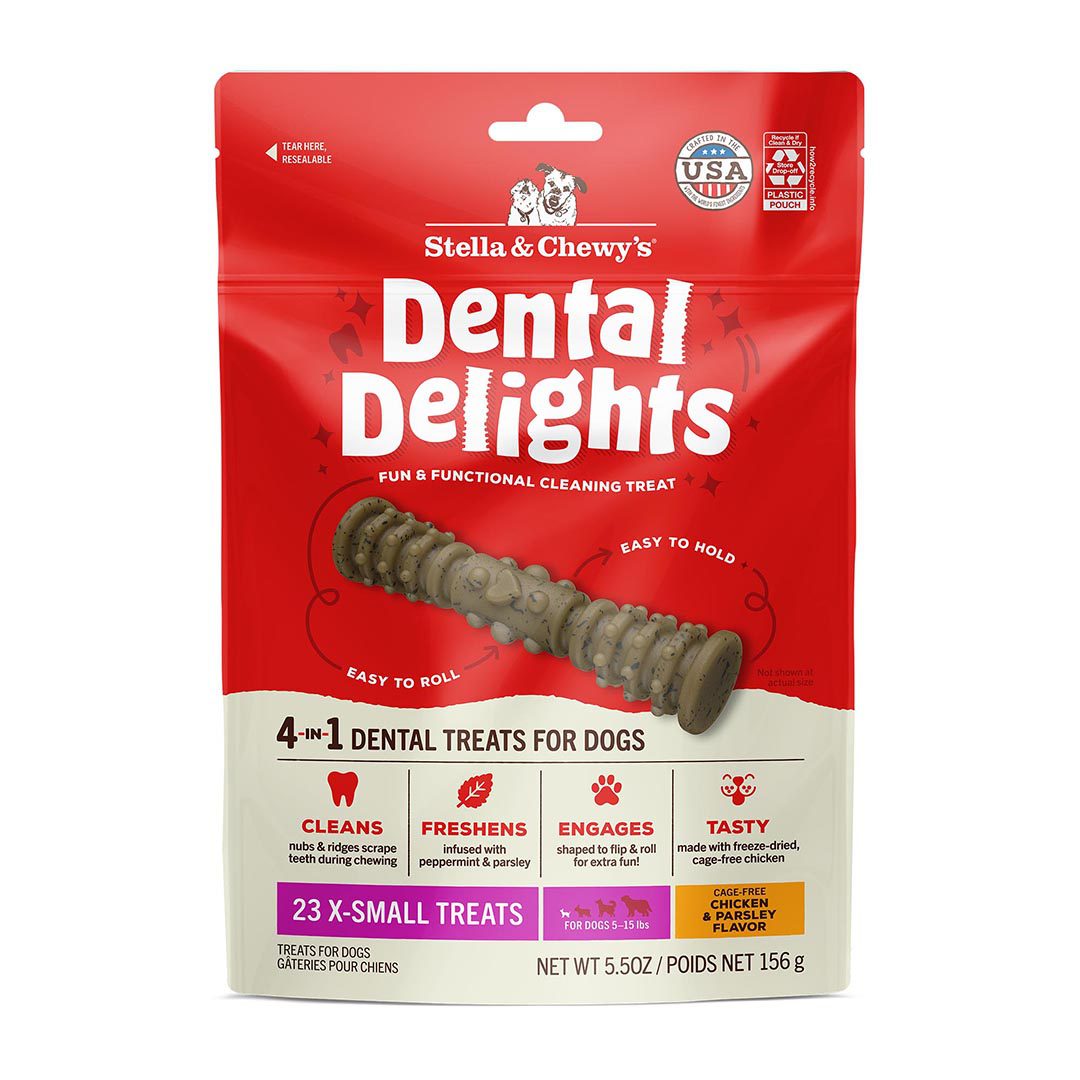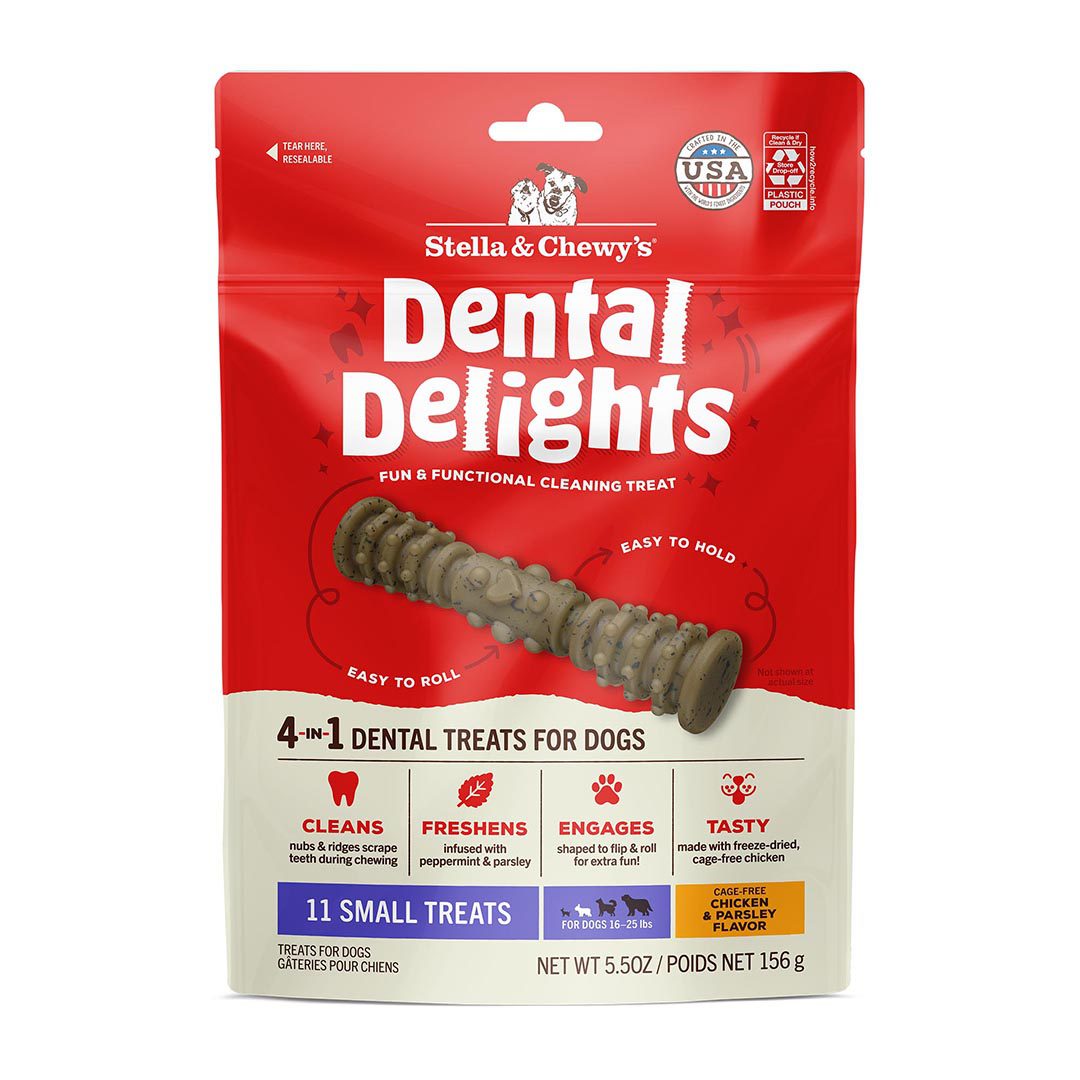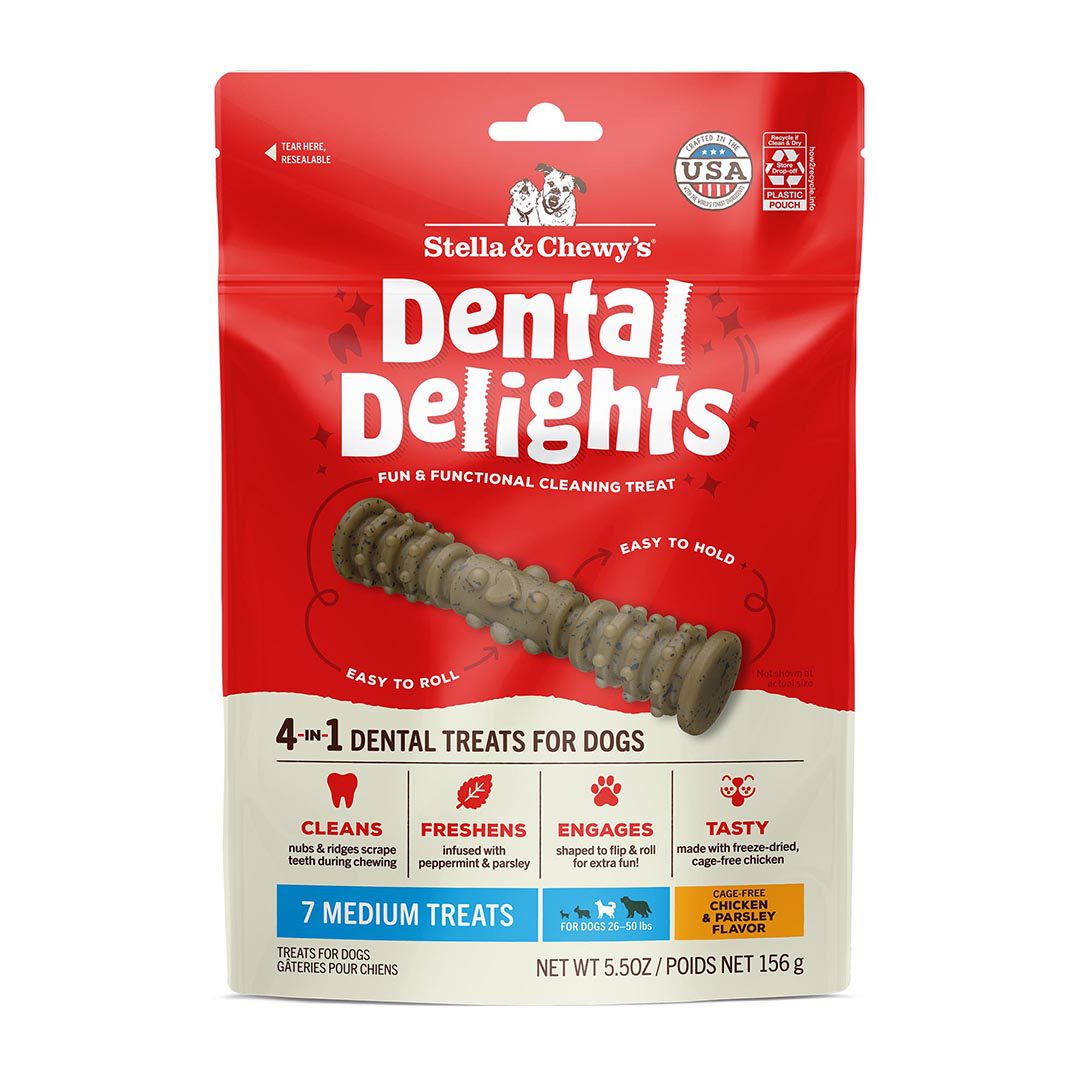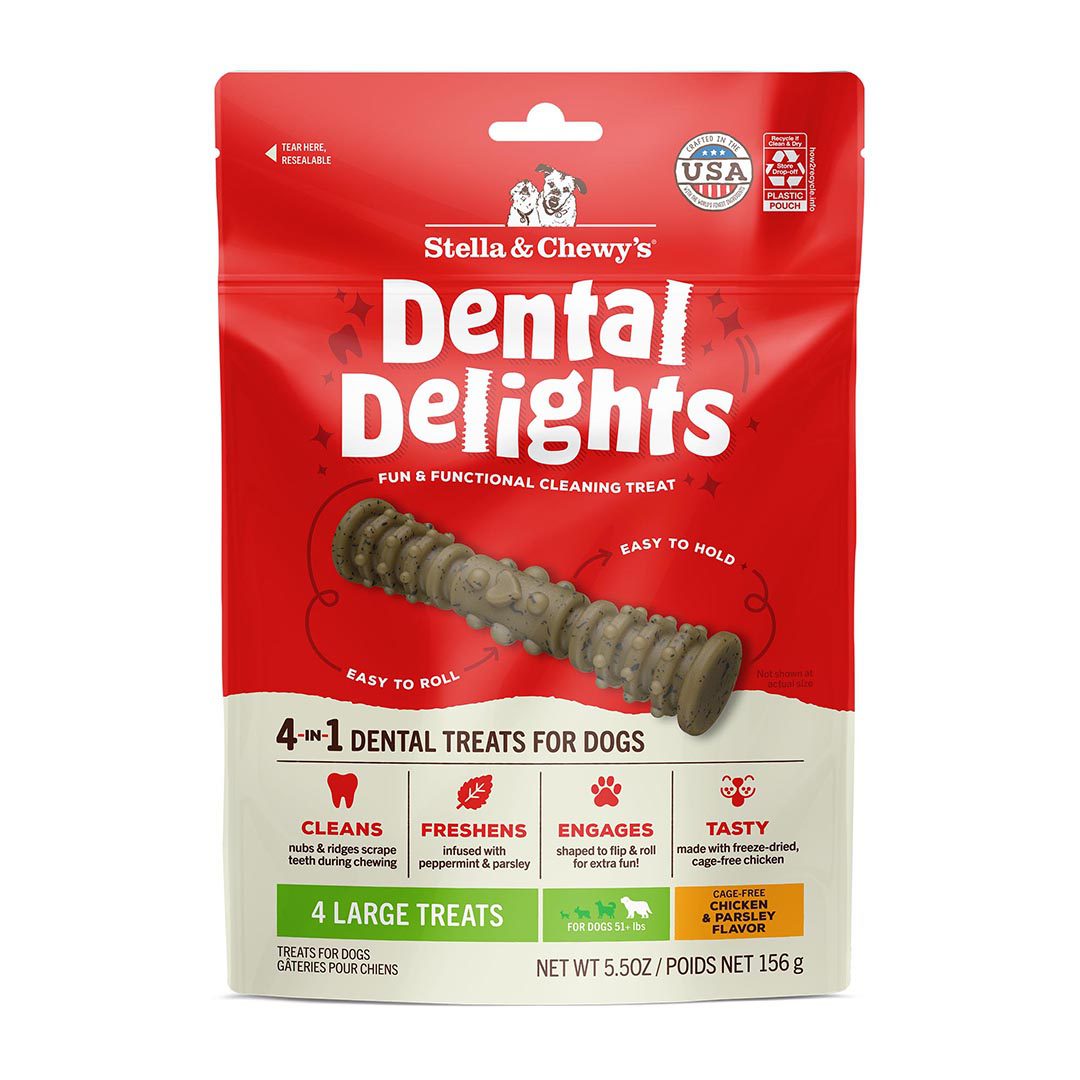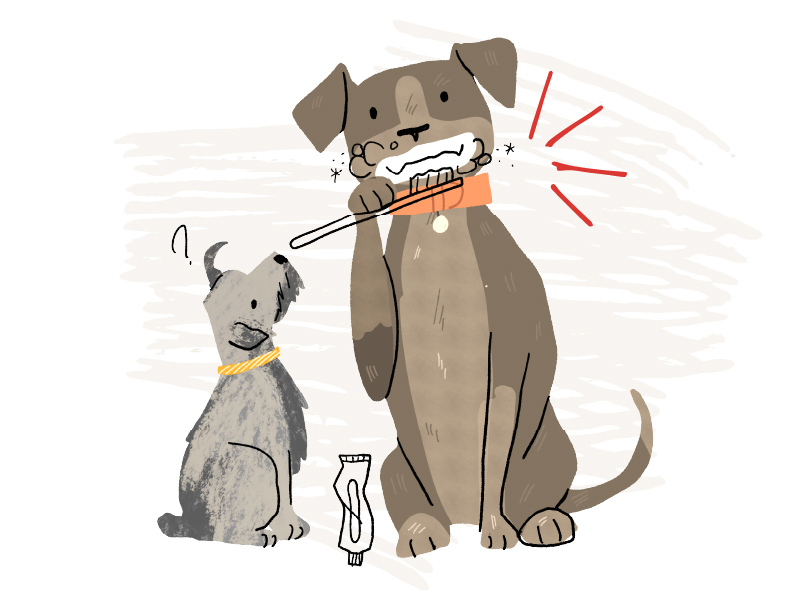
Clean teeth and good oral health are just as important for dogs as they are for people. Cleaning your dog’s teeth removes plaque, which can help prevent gum disease, oral pain, tooth loss and even more serious health issues.
Plaque is a sticky bacterial biofilm on the surface of teeth. Over time plaque builds up and hardens into tartar. Tartar can cause gum disease, and it can even lead to heart, kidney and liver damage if the bacteria enters your dog’s bloodstream.
As a dog parent it’s important to know how to clean your dog’s teeth as part of maintaining wellness, so you can maximize your quality time together!
Brushing Your Dog’s Teeth
The simplest and most effective way to ensure your pet’s teeth are clean is by brushing them. There are a few different ways to brush your dog’s teeth, but it all starts by having the right supplies.
Toothpaste for Dogs
You’ll want to purchase a toothpaste that’s specifically made for dogs, because toothpaste for humans contains ingredients that are toxic for our furry friends. Dog toothpaste also comes in different flavors (like peanut butter, beef or chicken) which can go a long way towards getting your dog on board.
Can I Use a Human Toothbrush on My Dog?
You can use a baby or child toothbrush to clean your dog’s teeth, or a soft-bristled toothbrush for adults (depending on how big your dog’s mouth is). There are also dog toothbrushes, including the kind that fit over your finger, which can make brushing easier. If you have more than one dog, each dog should have their own toothbrush.
How to Brush Your Dog’s Teeth
It’s ideal to start brushing your dog’s teeth while they’re still a puppy. But if you have an older dog it’s definitely not too late to start! Establishing a regular tooth brushing routine is always beneficial, just know that it may take longer for adult dogs to accept it. Here’s how to get started:
Dog tooth brushing step by step:
- Choose a place and time when your dog is calm and content.
- Sit or kneel at your dog’s level. Don’t stand over them or try to constrain them.
- Start by touching your dog’s teeth and gums using your finger, or a soft washcloth wrapped around your finger.
- Once your dog is okay with you touching their mouth, put some dog toothpaste on your finger and let them smell and taste it.
- Put a small amount of toothpaste on the brush and lift your dog’s upper lip with one hand. Gently brush two or three back teeth.
- If your dog allows you to keep brushing, continue brushing a few teeth at a time, working your way from back to front on one side, then the other.
- Aim to brush for about 30 seconds on each side (top and bottom) so you’re only brushing for about two minutes total.
- Praise your dog after the tooth brushing and reward them with a treat, walk or playtime.
Remember that cleaning your dog’s teeth is new and unfamiliar, so be patient and go at your dog’s pace. You might have to spend several days (or even longer) letting your dog get comfortable with each stage of the process. Baby steps!
Dog tooth brushing tips:
- Talk to your dog in a reassuring way while brushing.
- Keep tooth-brushing sessions light-hearted and brief.
- Brush your dog’s teeth a few at a time in short intervals (they probably won’t let you brush for two minutes straight).
- If it’s easier, you can brush half your dog’s teeth in the morning and half in the evening – whatever works!
- You really only need to brush the outside surfaces – your dog’s tongue wipes away most of the plaque on the inside.
- Use the same brushing technique you would for your own teeth: hold the brush at a 45° angle to the gumline, brush gently, and don’t forget the molars!
- Wash your hands and the toothbrush immediately after brushing.
- Dogs love a routine, so try to brush your dog’s teeth at the same time each day.
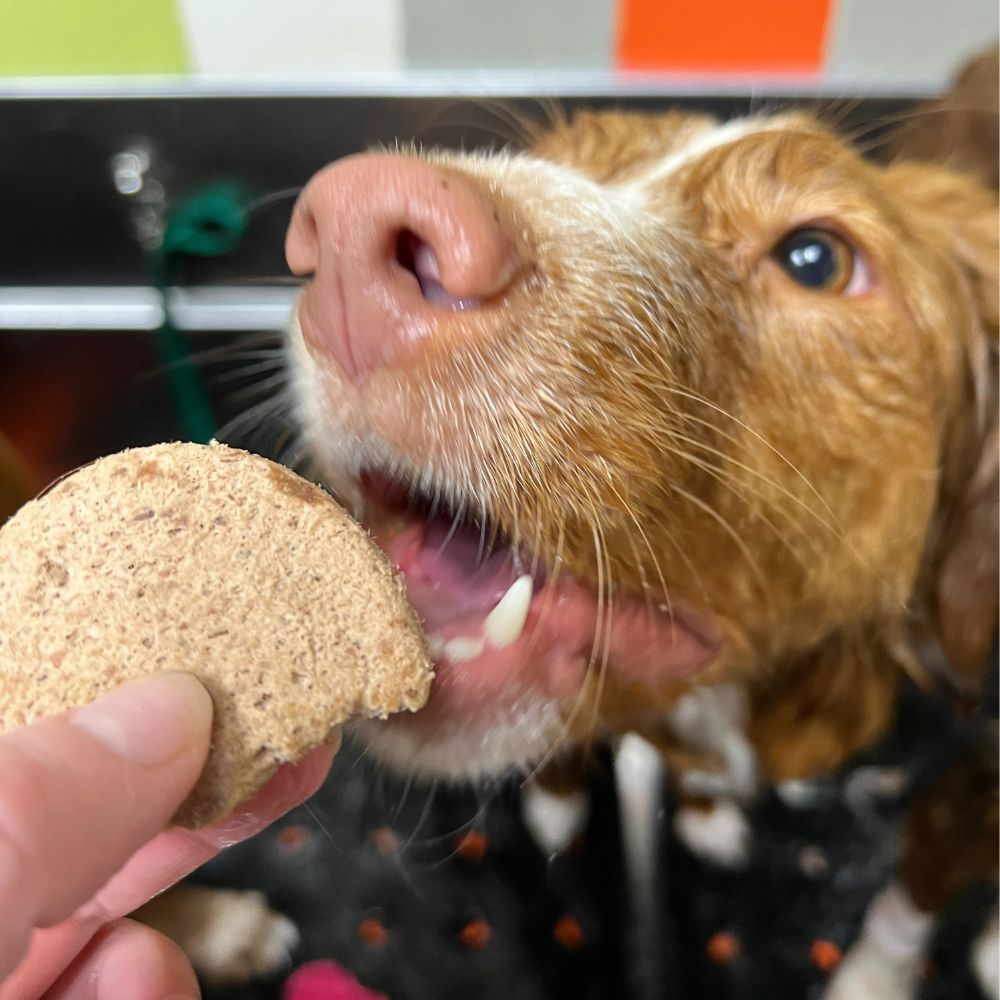
How Often Should I Brush My Dog’s Teeth?
Brushing your dog’s teeth once a day is ideal, but if that’s not possible 2-3 times a week is the recommended minimum. Even even once a week is better than never brushing!
My Dog Hates Tooth Brushing – Now What?
Some dogs just won’t tolerate having their teeth brushed. Luckily there are other things you can do to help clean your dog’s teeth. You can also use these alternatives along with brushing or in between brushings, which makes them even more effective.
Dog Tooth Wipes
Dog dental wipes are a brushless way to clean your dog’s teeth. They’re not as effective as brushing because they don’t clean between teeth or in the space along the gum line, but tooth wipes are a good substitute if brushing is off the table.
Feed a Raw Diet
One way to keep your dog’s teeth healthy is by feeding them a raw diet. Raw foods are rich in vitamins, minerals which are essential for oral health. Ground raw bone in our raw dog food acts as a natural dental abrasive to effectively clean your pet’s teeth while chewing. From Frozen Raw Dinner Patties and Freeze-Dried Raw Dinner Patties to Wholesome Grain Raw Coated Kibble, we offer a wide variety of raw products that can aid in keeping your dog’s teeth clean.
Give Your Dog Something to Chew On
Giving your dog a raw bone to chew will also help keep their teeth clean! The act of chewing on a bone removes plaque and reduces the chance of tartar buildup. Only give your dog raw bones, because cooked bones can splinter. Raw bones with gristle still on them work better than clean bones when it comes to removing plaque. Remember to always supervise your dog when they are chewing on a raw bone!
There are also dental chews, dental sticks and dental treats for dogs that are specifically designed to help clean their teeth. Make sure you get an appropriate size for your dog, and look for the VOHC (Veterinary Oral Health Council) seal before you buy. Stella & Chewy’s dental treats have many benefits for dogs and a unique, engaging shape that’s easy to hold and roll!
UPGRADE YOUR DOG’S DENTAL ROUTINE TODAY!
Cleaner teeth, fresher breath & pure delight – in one revolutionary new dental treat!
Try Dental DelightsTry a Water Additive
Dental water additives for dogs promote better oral hygiene by killing the bacteria that cause plaque and tartar buildup. Water additives can also help freshen your dog’s breath and keep their water bowl cleaner.
The best way to use dental water additives for dogs is in addition to a brushing or tooth-wiping routine, because the water will get into the tiny crevices you can’t reach. But dental water additives can still help on their own. Be sure to read the ingredients and avoid water additives with xylitol (a common artificial sweetener that’s toxic to dogs).
Dog Dental Sprays & Gels
There are also dental sprays that help prevent plaque formation. You don’t have to spray your dog’s teeth: just spray it into their mouth and it’ll mix with saliva as they lick and swallow. Make sure to pick a spray that actually targets the bacteria that cause plaque and bad breath (not just a breath freshener), and avoid sprays that contain alcohol.
Dental gel for dogs isn’t the same as toothpaste because it’s designed to work without brushing. Like oral spray, the gel mixes with saliva in your dog’s mouth which kick starts the active ingredients. Whether you try a gel or a spray, remember to look for that VOHC symbol!
Clean Your Dog’s Dishes More Often
Your dog’s food dish and water bowl are breeding grounds for all kinds of bacteria, including the potentially harmful strains. Less bacteria in your dog’s dishes means less entering their mouth while they eat or drink, and less plaque.
You should wash your dog’s food and water bowls regularly: the food bowl after every meal, and the water bowl once a day. You should also wash any scoops or utensils you use to prepare or serve your dog’s food – and your hands as well!
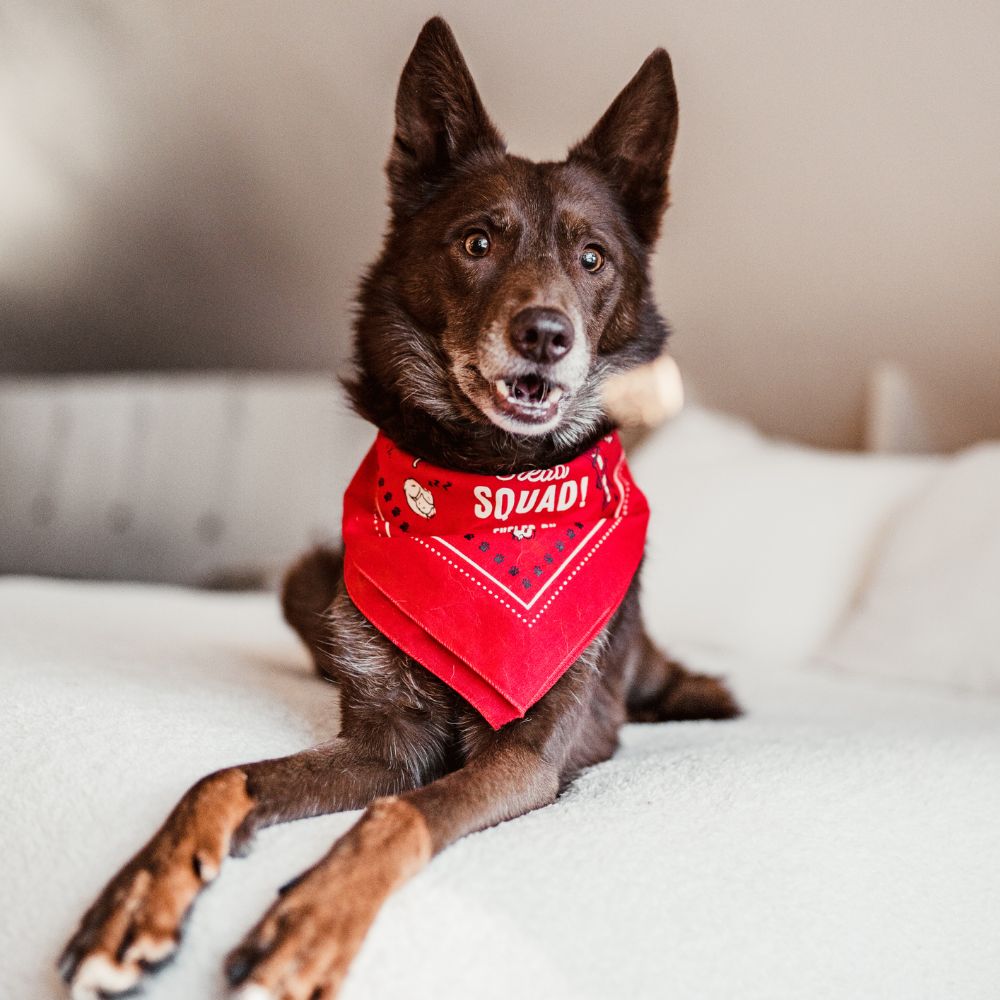
Professional Cleanings
Your vet may recommend annual or as-needed professional teeth cleaning for your dog, even if you do your best to keep your dog’s teeth clean at home. Dogs are typically put under general anesthesia for teeth cleaning, which lets your vet do a thorough job, including a visual inspection (and possibly X-rays) of your dog’s mouth, teeth and gums.
Some dog breeds are more likely to develop dental disease, so you may need more frequent professional care if you’re the parent of a toy poodle, greyhound, spaniel or flat-faced breed. Smaller dogs also tend to have more dental problems than larger dogs because their teeth are more crowded, which means more places for bacteria to collect.
Stella & Chewy’s Loves Your Dog
At Stella & Chewy’s, we love all dogs and want to ensure their health and happiness are at the top of the list. With that being said, check out Our Blog: For the Pet Obsessed to learn more about new products, updates, recipes, and activities for your cat or dog!
Learn more about helping your dog look and feel their best with our guide to at-home dog grooming.
GET $3 OFF, INSIDER OFFERS, AND HELPFUL PET CARE TIPS.
By entering your information, you are opting in to receive communication from Stella & Chewy's

